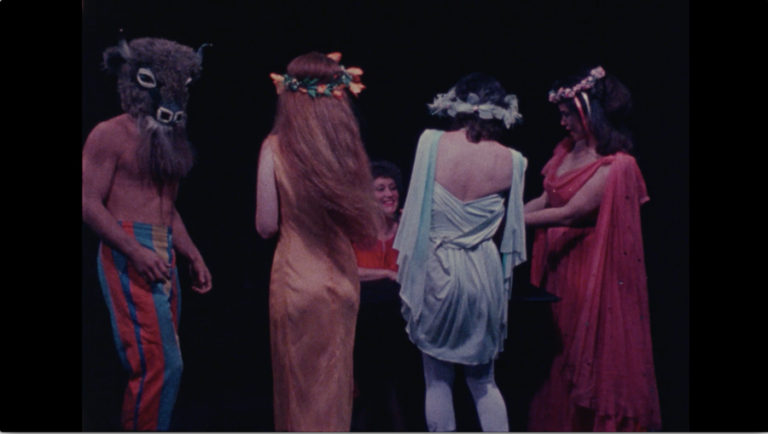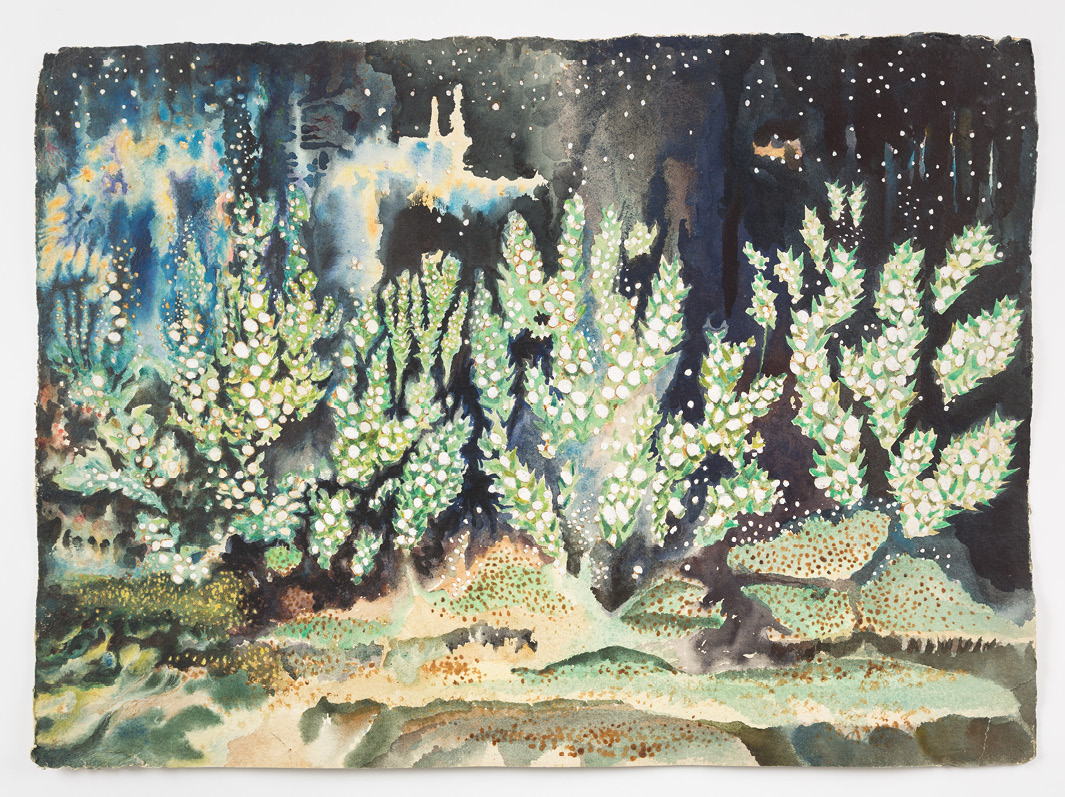Featuring over 60 works on paper and seven films, “Sara Kathryn Arledge: Serene for the Moment” discloses the brilliance of one singular artist who never should have been forgotten. This enthralling retrospective begins with a room of early drawings, archives and a timeline elucidating triumphs and traumas in the life of Arledge (1911–98), who was repeatedly institutionalized for psychological afflictions. Her apathetic husband once had her forcefully committed, which she poignantly detailed in her memoir, “Madness in Memory,” from which this show’s title is derived. Her only child died from suicide at 20. Transcending these personal tribulations, she created a substantial body of avant-garde work that stands staunchly on its own.
Though Arledge earned a Bachelor of Education in Art from UCLA and acknowledged her indebtedness to art history, her idiosyncratic imagery and philosophical musings attest a strong nonconformist ethos. “Our people are being herded into attitudes & subservient behavior that are in violation of their evolution or even survival,” reads one of her notes on display.
Undercurrents of social commentary on conventions and alienation permeate her films’ and paintings’ uncanny scenes, seeming to have originated from a fascinating private netherworld. Motifs of bizarreness and bodily distortion conjure notions of real-life isolation. Her most polished film, Introspection (1941/1946), is an eerie 6-minute phantasmagoria of disembodied limbs and torsos for which Arledge is credited with pioneering a choreographic genre called “cine-dance.” In the late 1940s, she developed her own technique of creating videos by painting on glass slides that were subsequently loaded into projectors and screened in abstract sequences. Luminous organic forms are accompanied by strange sound recordings in experimental films such as Interior Garden II (1978), evoking the feeling of inhabiting microscopic realms of mutating alien bacteria.

Sara Kathryn Arledge, What Do Two Rights Make?, (1983) Film, sound, color; 16 min. 58 sec. © All rights reserved, UC Berkeley Art Museum and Pacific Film Archive
Arledge’s paintings are imbued with a peculiar visual ingeniousness. These feature evocative shapes and nebulous creatures that seem to sprout, dance and mutate as in her videos. A group of watercolors including Untitled (4 Dancing Figures) (1958) brings to mind ghastly mystical versions of Matisse’s dancers. Works such as Untitled (Woman floating) (c. 1956), Summer Night (1966) and Untitled (Abstract with Black, 2 figures on Red) (c. 1964) portray fetal forms, magical plants and fungus-like people that inhabit delirious dreamlike worlds limned in rainbow color. In lively movement and lone totemic forms, such paintings recall a Miroesque surrealism. Yet Arledge’s individualistic practice, like that of Florine Stettheimer, is all her own.
“Let’s not think of the paintings as abstract or surreal or by any other word. I think we can make more direct discoveries in a work of art if we don’t classify it while we are looking at it,” she wrote in 1978. Gentle eschewal of custom ingrains the spirit of her variously delicate and nightmarish oeuvre encompassing ogres, toothy Venus flytrap monsters, dignified chimera and serene abstract realms. Could Portrait of a Shaman (1970) symbolize the artist as a giant eye looking “to pierce through the hypnotic effect of the group of illusions we call conventions”? Perhaps society is finally catching up to Arledge’s intrepid conceptual refusal to settle into prescriptive molds.


